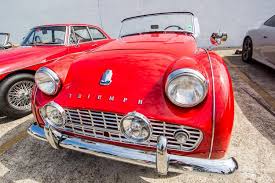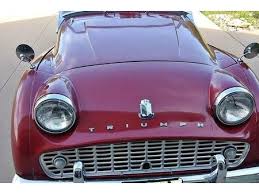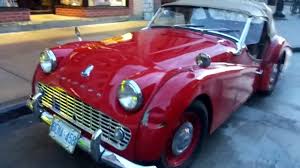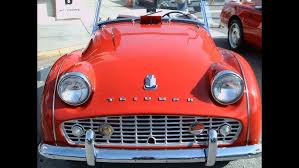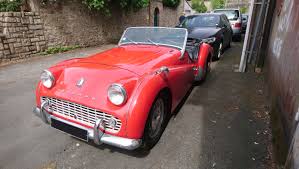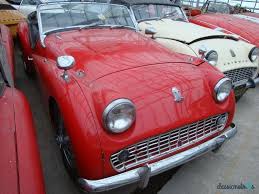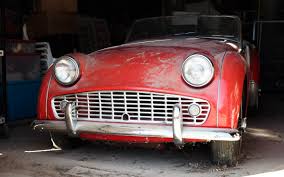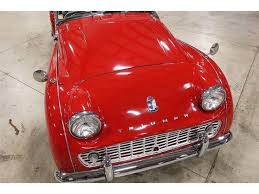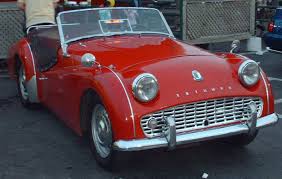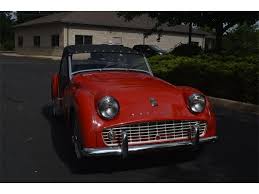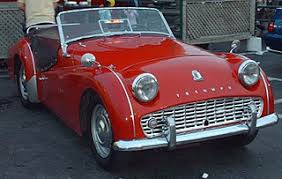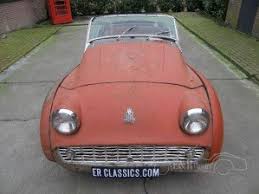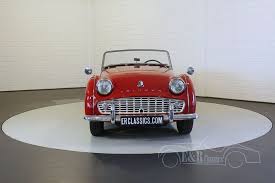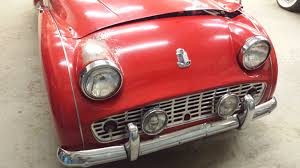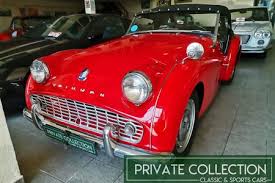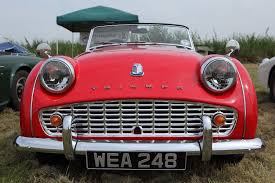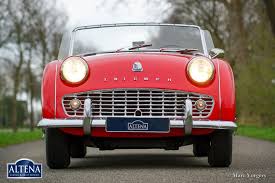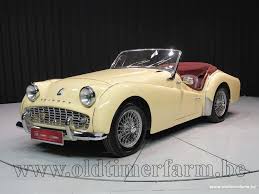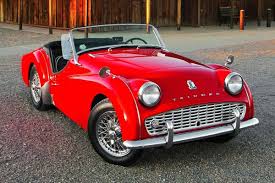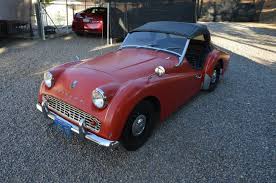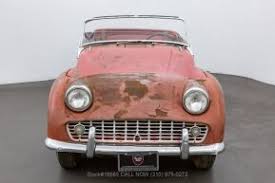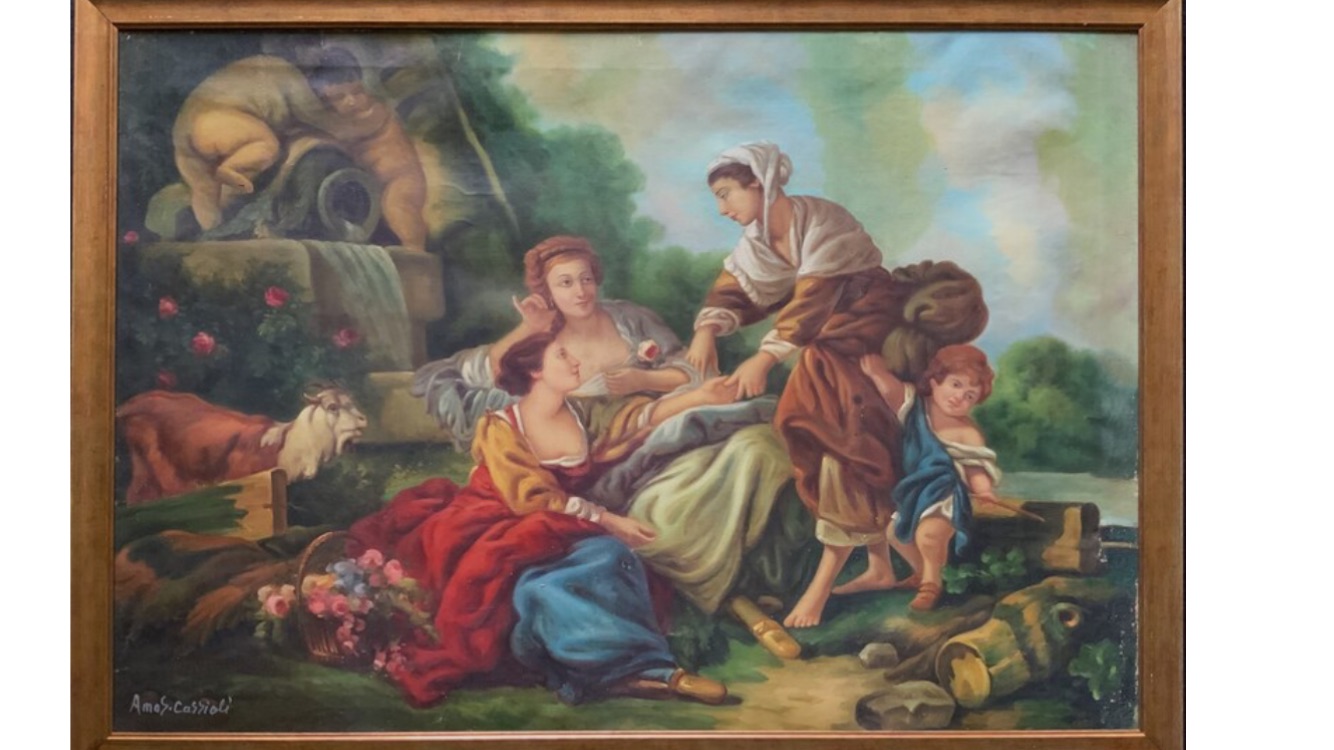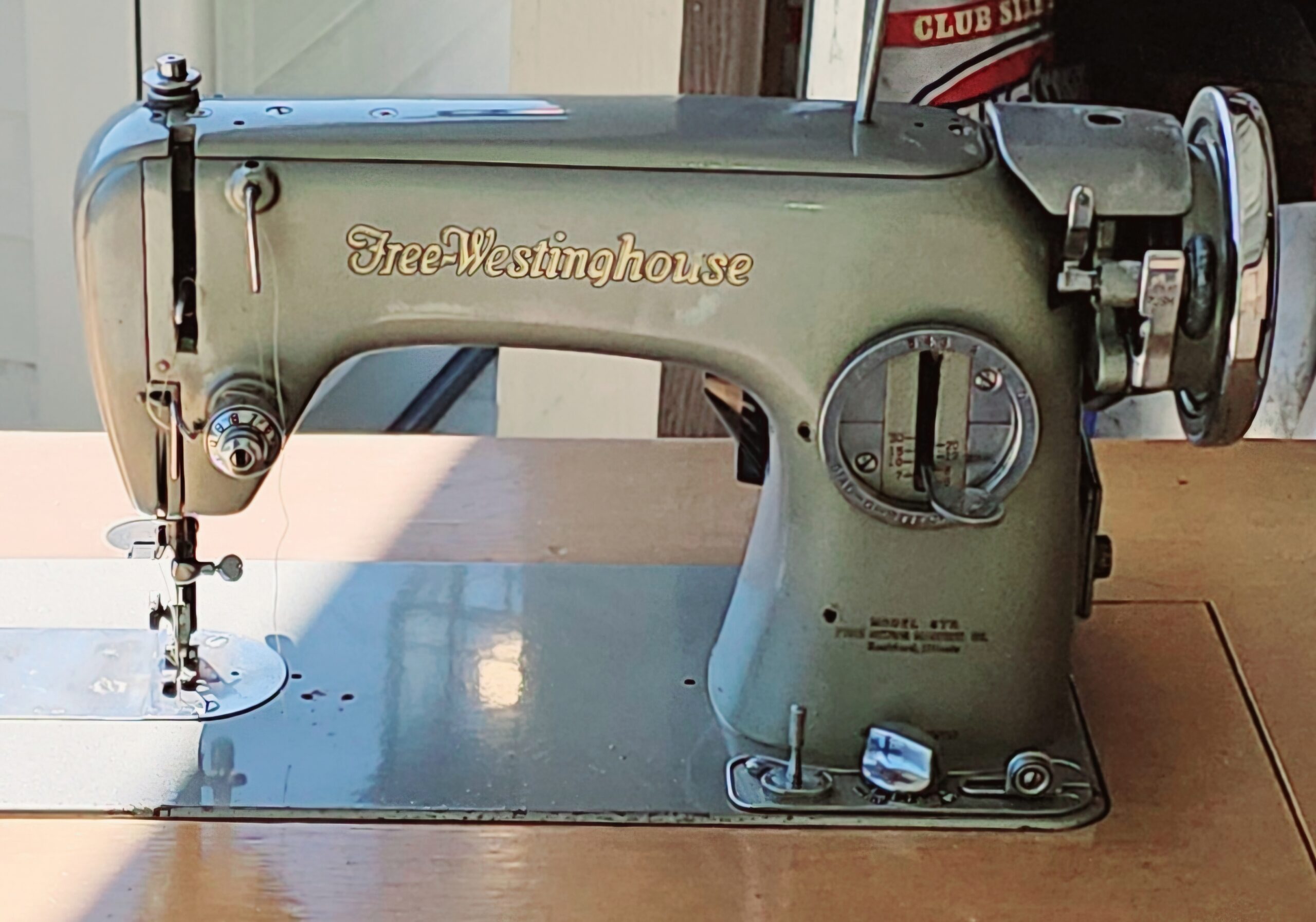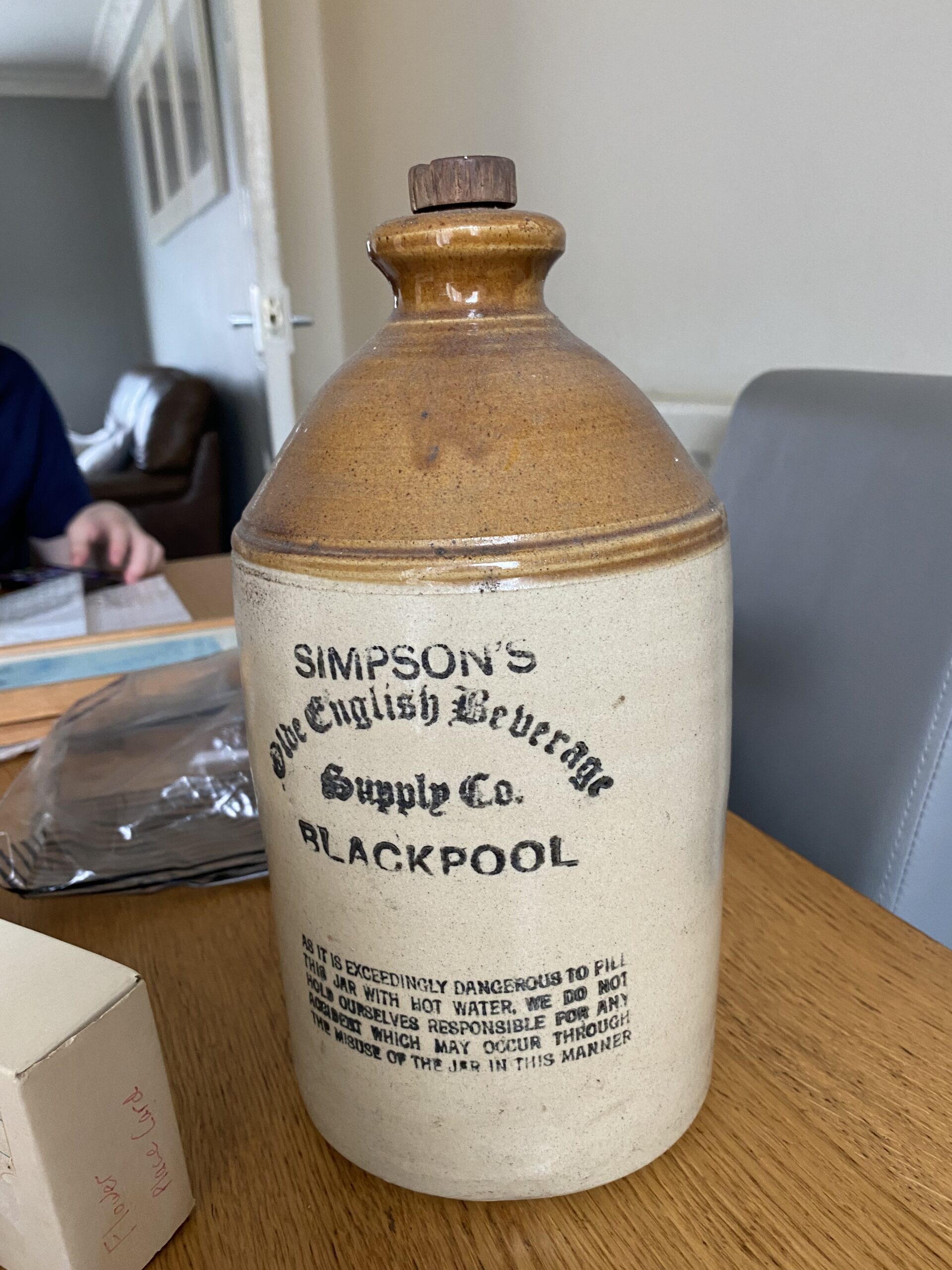A Red Color Circa 1960s Triumph TR3A Car British sports cars that was produced from 1955 to 1962 Needs Restoration
This report is designed to provide a professional appraisal of the specific item requested. It contains a detailed description and evaluation of the item, as well as information about the valuation method used. The value given in this appraisal report is applicable only to the item in question and should not be interpreted as a general valuation for any similar items. Values for similar items can vary significantly, ranging from one hundred to one hundred thousand US dollars, depending on subtle details.
This report is intended to give the owner an appraisal of their item’s value, whether it is furniture, china, glassware, or any other type of antique or collectible item. The information provided will help the owner to understand their piece and its value. Furthermore, it provides an appraisal value in US dollars, as well as advice on how to proceed if the owner wishes to sell the item. It should be noted that this report is not intended to encourage the owner to sell their antique item; instead, it seeks to provide information on its value so that the owner can make an informed decision.
Description, identification, provenance reconstruction, age estimation, style and similar items used for comparison.
Identification
Identifying a specific antique item from a photograph can be a complex and meticulous process for an appraiser. The first step is to carefully examine the photograph and gather as much information as possible about the piece. This includes analyzing the design, materials, craftsmanship, and historical context of the item. For example, in the case of a Red Color Circa 1960s Triumph TR3A Car, an appraiser would look for distinctive features such as the make, model, and year of production. They would also consider the condition of the car, noting any signs of damage or wear. Additionally, the appraiser would research the historical significance of the car, as well as its popularity and rarity in the market. They may also consult with other experts or reference books to compare the photograph with known examples of similar cars. By carefully examining all of these factors, an appraiser can deduce the nature and authenticity of the antique item and provide an accurate appraisal.
Provenance
As an antique appraiser, one of the key aspects in determining the value and authenticity of an antique item is its provenance. In the case of a specific antique item such as the Red Color Circa 1960s Triumph TR3A Car, there are several factors and methods that can be considered to deduce its origins, history, and ownership. One of the first factors to consider is the design elements of the car, such as the body style, type of engine, and interior features. This can help in identifying the time period in which the car was produced, as well as any unique design details that may indicate a specific model or year. Additionally, the craftsmanship of the car, including details such as the quality of materials used and any custom modifications, can provide insight into its origins. Historical context is also important, as the production of the Triumph TR3A car was limited to a specific time period, which can help in narrowing down its potential age. Available documentation, such as registration papers, maintenance records, and previous appraisals, can also provide valuable information about the ownership and history of the car. By carefully examining all of these factors and methods, an appraiser can accurately determine and explain the provenance of the Red Color Circa 1960s Triumph TR3A Car in the appraisal report.
Age
As an appraiser, there are several methods and factors I would consider when determining the age of a specific antique item, such as the Red Color Circa 1960s Triumph TR3A Car. First, I would examine the construction techniques used in the production of the car. In the 1960s, British sports cars like the TR3A were typically made using traditional hand-craftsmanship methods, with a focus on quality and attention to detail. This can be seen in the car's body and interior design, as well as the use of materials such as leather and wood. Next, I would look at the design elements of the car, including its shape, size, and features. Cars from the 1960s often had a sleek and aerodynamic design, with rounded edges and chrome accents. Additionally, I would consider the historical context of the car, as the 1960s were a time of significant advancements and changes in the automotive industry. Lastly, I would examine any available documentation or markings on the car, such as a manufacturer's label or serial number, which could provide valuable clues to its age. Overall, a combination of these factors would help me determine that the Red Color Circa 1960s Triumph TR3A Car is a vintage piece from the 1960s and may require restoration due to its age and condition.
Style
The Triumph TR3A, a British sports car produced in the 1960s, is a prime example of the iconic design and engineering of this time period. The car features a sleek and aerodynamic body, with a striking red color that was popular during the post-war era. Its design elements, such as the rounded headlights, chrome accents, and low-slung profile, reflect the influence of the European sports car movement of the time. The use of high-quality materials, such as steel and leather, also speaks to the craftsmanship and attention to detail that was characteristic of this era. The TR3A's production was also influenced by the rise of British sports cars in the automotive market, making this particular model a representation of the cultural significance and popularity of these vehicles. Despite its need for restoration, the Triumph TR3A remains a highly desirable and collectible antique item that embodies the style and spirit of the 1960s.
Similar Items Used for Comparison Purposes
Comparable sales information, including prices realized at recent auctions or private sales of similar items
In order to provide an up-to-date estimate of the fair market value for the item, I utilized the data collected, including auction prices, private sale prices, and other relevant market information. This is crucial as it can be used in various contexts such as insurance, estate planning, and art market analysis. It also offers a valuable insight into how the valuation of the item may have changed due to environmental or economic factors.
The auction prices and private sale prices were a significant factor in determining the current market value of the item, as they are based on actual transactions between buyers and sellers in the market. As such, they are a strong indicator of the expected value of the piece in the near future. By analyzing auction results and private sale prices from the last 6 months, I was able to accurately determine the current fair market value of the item.
This approach provides a comprehensive view of how the value has changed over time and gives insight into any potential areas of appreciation or depreciation in its price. Additionally, it allows me to adjust my valuation as new auction prices and private sale prices become available.
Conclusion
The Triumph TR3A, a British sports car produced in the 1960s, is a prime example of the iconic design and engineering of this time period. The car features a sleek and aerodynamic body, with a striking red color that was popular during the post-war era. Its design elements, such as the rounded headlights, chrome accents, and low-slung profile, reflect the influence of the European sports car movement of the time. The use of high-quality materials, such as steel and leather, also speaks to the craftsmanship and attention to detail that was characteristic of this era. The TR3A's production was also influenced by the rise of British sports cars in the automotive market, making this particular model a representation of the cultural significance and popularity of these vehicles. Despite its need for restoration, the Triumph TR3A remains a highly desirable and collectible antique item that embodies the style and spirit of the 1960s.
Appraisal Value ($)
$33,000
Appraisal Report made by:
Andrés Gómez
BSc, MSc, Expert Art Appraiser
10+ years of experience in online antique and collectible appraisals.
100k+ Customers Served.
Antique Store Owner.
You can check my portfolio of past appraisals here:
https://www.appraisily.com/andres-portofolio/
Signature:

We have Experts online now.
Pictures received.
Custom made Ad Copy Text
1. "Step back in time and experience the thrill of driving a vintage British sports car with this stunning 1960s Triumph TR3A. Impeccably designed and crafted, this iconic vehicle represents a golden era of automotive history. With its sleek red exterior and powerful engine, it's sure to turn heads and make a statement wherever you go. Don't miss your chance to own a piece of automotive nostalgia and restore this timeless classic to its former glory." 2. "Looking for a truly unique and rare find? Look no further than this Circa 1960s Triumph TR3A. As one of the most sought-after British sports cars of its time, it's a true collector's item. Boasting a rich history and exceptional craftsmanship, this vintage beauty is just waiting for the right owner to bring it back to life. Whether you're a car enthusiast or simply appreciate the beauty of a bygone era, this Triumph TR3A is a must-have addition to any collection."
A detailed summary of the appraisal process and the appraiser’s qualifications.
Mark-to-market appraisal is a vital method for determining the current value of an item. This form of valuation requires an appraiser to consider various factors, such as market conditions, the condition and age of the item, and its rarity. By taking all these elements into account, a mark-to-market appraisal delivers an accurate assessment of an item’s current market value.
The item’s rarity, as determined by its availability and demand, is also considered in mark-to-market appraisal. Appraisers use this information to determine if the value of a piece is likely to increase or decrease over time. Additionally, they will inspect the condition of the item and note any signs of wear or damage that might affect its future resale value.
When performing mark-to-market appraisals, appraisers also consider market conditions by researching current market trends and comparable items that have recently sold. This information is used to provide an estimate of an item’s worth at that point in time. By considering all of these factors, mark-to-market appraisal is able to give a reliable indication of the current value of an item. This kind of valuation can also ensure fair prices are paid and received when buying or selling items.
In summary, mark-to-market appraisal is a crucial tool for determining the true value of an item, enabling buyers, sellers, and appraisers to make informed decisions regarding its worth. It takes into account multiple aspects to provide an accurate assessment of the current market value of an item. This information can be used to ensure that buyers and sellers are getting a fair price for the item, and that the appraiser’s valuation is up-to-date and reflective of current market conditions.
In the case of insurance replacement appraisals, mark-to-market appraisals can also be used to accurately estimate the cost of replacing a lost or damaged item. The current value, as determined by the appraisal, is then used to determine the amount that the insurance company will pay back to the policyholder. This way, policyholders can rest assured that they will receive an appropriate sum for any item that needs to be replaced due to accidental damage or theft. Additionally, this kind of valuation helps insurers ensure they are not being overcharged when items need to be replaced as part of a claim settlement.
The appraisal process is a thorough evaluation of the item or items in question. It involves researching and analyzing the information provided by the requester in order to provide an accurate estimate of its value. The appraiser takes into account factors such as condition, rarity, demand, and market prices. Photographs and detailed descriptions are especially important when providing an appraisal, since they help the appraiser identify any potential flaws or defects that could affect the item’s worth. By using all the resources that are available, an evaluation can be done quickly, efficiently, and with a high level of accuracy.
A statement of the appraiser’s liability and any potential conflicts of interest.
A qualified appraisal, also known as a formal written evaluation, is a professional assessment of the monetary value of an item by an individual who has specialized knowledge, expertise, and training in the field of appraisals. This person must meet certain educational and professional requirements, including experience in researching and evaluating items, as well as knowledge of the market and current market trends. The purpose of a qualified appraisal is to provide an objective and unbiased opinion of the value of an item for various purposes, including insurance claims, tax planning, estate planning, or to help determine a fair price for a sale or purchase.
We are committed to providing our clients with the most accurate and unbiased appraisal reports. To ensure impartiality, we adopt a flat rate, fixed fee structure for all appraisals, instead of a percentage-based fee. This eliminates any potential conflicts of interest between the appraiser and the final report value. Our appraisal reports are in compliance with the Appraisal Foundation’s USPAP (Uniform Standards of Professional Appraisal Practice) standards and guidelines, which are widely accepted as the ethical and performance standards for appraisers. This guarantees that our reports are of high quality and legally defensible.
